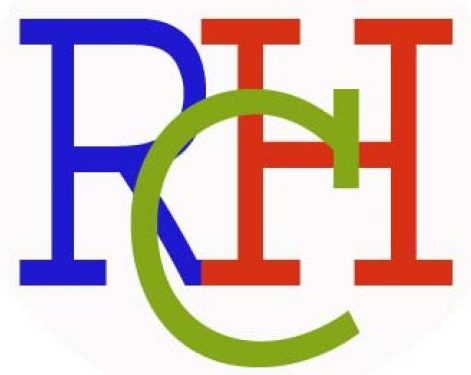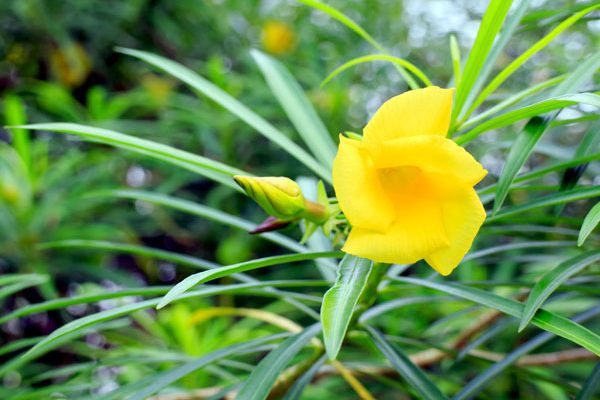Yellow oleander(thevetia peruviana)
Yellow oleander is an ornamental plant, which is cultivated in gardens. is a poisonous plant native throughout Mexico and in Central America, and cultivated widely as an ornamental.
Oleander seeds and leaves are used for medicinal purposes despite their danger. They are used for various conditions such as heart conditions, asthma, epilepsy, cancer, painful menstrual periods, leprosy, malaria, ringworm, indigestion, and venereal disease. They are also used to cause abortions.
A fixed combination of oleander leaf powdered extract, pheasant’s eye fluid extract, lily-of-the-valley fluid extract, and squill powdered extract has been used for treating mild heart failure.
Oleander is sometimes applied to the skin to treat skin problems and warts.
Some of the reported health benefits of yellow oleander are:
- It may help with muscle cramps, asthma, epilepsy, and paralysis by acting as a cardiac stimulant and increasing blood circulation1.
- It may have antibacterial, antifungal, anticancer, and antiperiodic properties.
- It may support wound healing, skin conditions, and hair growth by applying the leaves or flowers as a poultice.
- It may aid in digestion, constipation, malaria, jaundice, hemorrhoids, and menstrual problems by taking a decoction of the bark or root.
However, these benefits are not supported by scientific evidence and there are many risks associated with yellow oleander use.
Medicinal uses
- Insecticide
- Reduce or eliminate fever
- A mild laxative
Some of the side effects and toxic effects of yellow oleander are:
- It can cause nausea, vomiting, diarrhea, abdominal pain, headache, dizziness, confusion, irregular heartbeat, low blood pressure, and even death.
- It can interact with other medications, especially those that affect the heart or blood sugar levels.
- It can cause allergic reactions, such as skin rash, itching, swelling, and difficulty breathing.
- It can harm the liver, kidneys, lungs, spleen, and muscle tissue.
Therefore, yellow oleander should not be used without medical supervision and guidance. If you are interested in using yellow oleander for any health condition, please consult your doctor first. Do not ingest or apply any part of the plant without proper preparation and dosage. Do not inhale the smoke from burning the plant or touch the plant with bare hands. Keep the plant away from children and pets. Yellow oleander is not a safe or effective remedy for most health problems.
How to Use Yellow Oleander
As I mentioned before, yellow oleander is a very poisonous plant and should not be used without medical supervision and guidance. However, if you still want to know how to use it, here are some general methods that have been reported in traditional medicine:
- To make a decoction of the bark or root, boil about 5 grams of the dried material in 200 ml of water for 15 minutes, then strain and drink. The dose should not exceed 10 ml per day.
- To make a poultice of the leaves or flowers, crush or grind the fresh or dried material and mix it with water or oil to form a paste. Apply it to the affected area and cover with a bandage. Change the poultice every few hours.
- To make a tincture of the seeds, soak about 10 grams of the dried seeds in 100 ml of alcohol for a week, then filter and store in a dark bottle. The dose should not exceed 5 drops per day.
Please note that these methods are not recommended or endorsed by me or any medical authority. They are based on anecdotal reports and may not be safe or effective. You should always consult your doctor before using any herbal remedy, especially yellow oleander. Do not use yellow oleander if you are pregnant, breastfeeding, have heart problems, diabetes, or any other medical condition. Do not use yellow oleander with other medications or supplements. Do not use yellow oleander for children or pets. Do not use yellow oleander for more than a few days at a time. Do not exceed the recommended dose or frequency. Do not combine different parts of the plant or different methods of preparation. Do not use yellow oleander that is damaged, moldy, or contaminated.
If you experience any adverse effects from using yellow oleander, such as nausea, vomiting, diarrhea, abdominal pain, headache, dizziness, confusion, irregular heartbeat, low blood pressure, or difficulty breathing, stop using it immediately and seek medical attention. Yellow oleander poisoning can be fatal if not treated promptly.
for more information on how to use the plant please contact us


